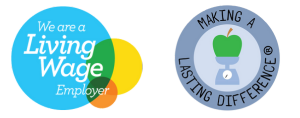SIAA’s monthly peer support sessions are informal opportunities for SIAA members to meet colleagues from across the sector, share ideas and provide mutual support. Our latest session was focussed on non-instructed advocacy. Members said they really benefited from hearing colleagues’ from different organisations across Scotland share their experiences and approaches, identify common issues and share good practice tips!
You can find some key discussions points and useful resources to keep learning and improving non-instructed advocacy practice below.
Non-instructed advocacy key discussion points
Participants mentioned some of the challenges they have found when providing non-instructed advocacy:
- COVID restrictions – it is difficult to do non-instructed advocacy without spending time in person with the advocacy partner.
- Engaging with advocacy partners virtually – online channels (Whatsapp, Skype, phone, etc) are inaccessible to many advocacy partners.
- Lack of time spent with advocacy partners – some decision-makers/hospital staff do not take the time to try communicating with advocacy partners and, therefore, neglect to learn their perspectives and wishes.
- Communication barriers – there are many ways of communicating and lots of different accessible options but it takes time to get to know a person’s communication needs and preferences.
- Capacity as a ‘grey area’ – concerns about knowing how to identify when non-instructed could be needed.
Staff also shared their positive experiences and good practice approaches to non-instructed advocacy:
- Building a relationship with advocacy partner – it is important to spend time and listen to the advocacy partner actively.
- Requesting evidence – advocates can ask decision-makers about the evidence that supports decisions affecting their advocacy partner’s life.
- Observation – where there are barriers to communication an advocate can spend time getting to know what is important to a person through observation.
- Family and carers – advocates identified the importance of finding a balance between getting important information about the advocacy partner’s preferences and wishes from family/carers, and remaining clear that advocates are there for the advocacy partner and not anyone else with a vested interest.
- Human rights and least restrictive option – keeping in mind that services should be working towards the ‘least restrictive option’ for people and aiming to uphold ‘Article 19 – Living independently and being included in the community’ under the United Nations Convention on the Rights of Persons with Disabilities (UNCRPD).
- Talking Mats – using Talking Mats and other alternative communication tools has shown outstanding results to engage with advocacy partners.
- Training and resources – seeking training on non-instructed advocacy and accessing high-quality resources.
Resources
Here are some resources to better understand and improve non-instructed advocacy provision:
- Non instructed advocacy guidelines: https://www.siaa.org.uk/information-hub/non-instructed-advocacy-guidelines/
- Helping communication: https://www.chss.org.uk/community-stroke-services/communication-after-stroke/helping-communication
- Supporting communication: https://www.chss.org.uk/community-stroke-services/supporting-communication/
Furthermore, we are planning training on Adults with Incapacity (AWI) for our members that will cover some non-instructed advocacy elements. We will post more information soon on our ‘Members events’ page.
We would love to hear from you. Please visit the ‘Get involved‘ page and share your thoughts via the ‘Feedback and ideas’ form. You can sign up for future peer support sessions via our ‘Members events‘ page.

